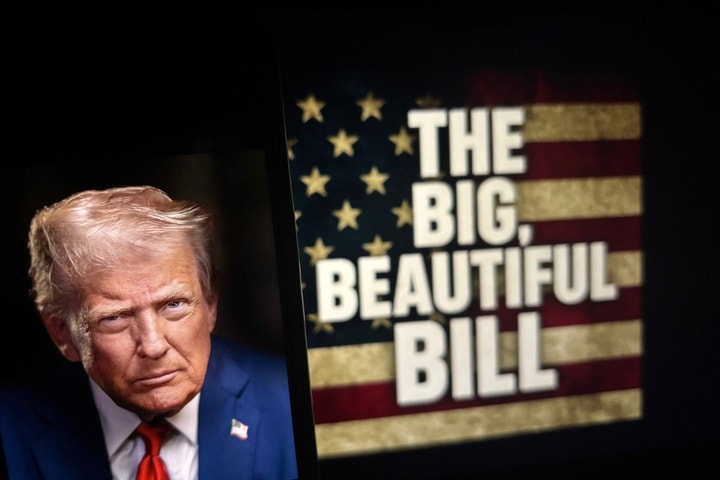
President Donald Trump signed his massive spending and social policy bill into law during an Independence Day event at the White House on Friday. The new law will provide substantial tax relief for affluent Americans, while also implementing significant reductions to social welfare programs.
What Happened: The legislation extends the 2017 tax cuts from Trump’s initial term indefinitely, and introduces new tax benefits such as tax-free tips up to $25,000 and a “senior deduction” for individuals over 65 to evade Social Security taxes.
Nonetheless, some studies imply that the tax reductions for lower earners may be counterbalanced by new expenses from lost support for healthcare and food assistance.
According to a report by The Hill, the Tax Policy Center estimates that approximately 85% of households would receive a tax cut in 2026. However, certain provisions, like the new deduction for seniors, are set to expire within a few years. By 2030, only about 70% of households would continue to have a tax break.
The Center also projects that nearly 60% of the tax benefits would go to those in the top quintile of annual incomes, or about $217,000 or more. These households would receive an average tax cut of $12,500.
However, the bill’s comprehensive cuts to Medicaid and nutrition assistance could counterbalance the benefits low-income Americans might see in tax breaks.
Federal Medicaid spending is estimated to decrease by about $1 trillion, resulting in about 12 million low-income Americans losing their health insurance by 2034, according to the nonpartisan Congressional Budget Office.
The bill also includes work requirements for Medicaid and for Supplemental Nutrition Assistance Program benefits, previously known as food stamps, which could disenroll millions from both programs.
Why It Matters: The bill is a significant piece of legislation that could have far-reaching implications for the American economy and society.
While it promises substantial tax breaks for the wealthy, it also proposes major cuts to social welfare programs that could impact millions of low-income Americans.
The potential benefits and drawbacks of this bill will likely be a major topic of discussion and debate in the coming weeks and months.
Read Next
Image: Shutterstock







